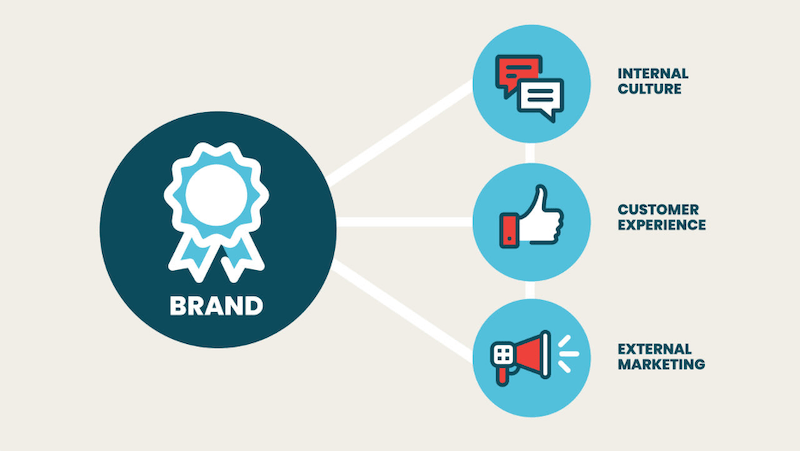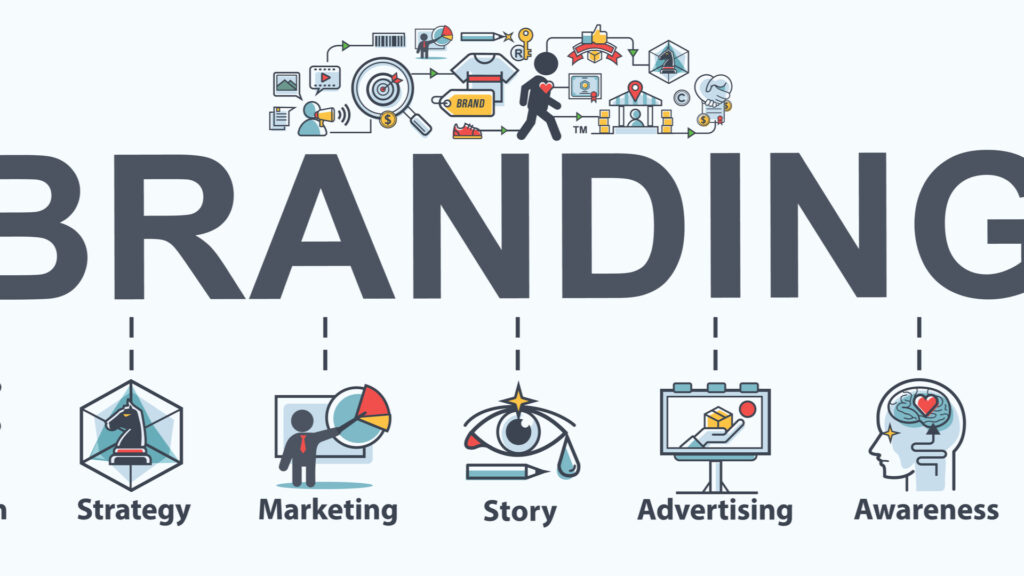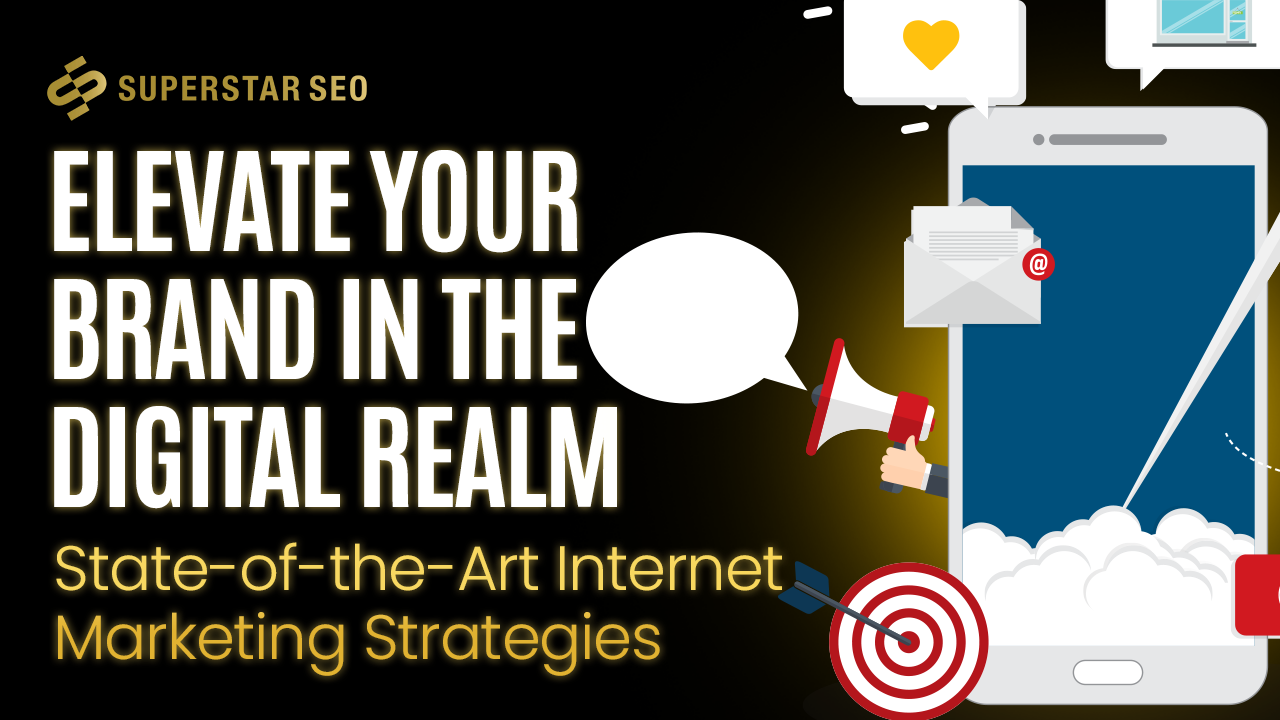The Meteoric Rise of Digital Marketing: A Shift from Offline to Online
In contrast to conventional offline approaches, digital marketing has become the dominant force in the marketing landscape, which has experienced a seismic shift in recent years. A multitude of factors that collectively highlight the unrivaled popularity of digital marketing is responsible for this transformation. Digital marketing, with Fox Marketing at its forefront, offers a dynamic and adaptable approach to staying ahead of the competition. The ability to pivot quickly, leverage emerging trends, and harness the latest technologies positions businesses for sustained growth and relevance.
One pivotal aspect driving the ascendancy of digital marketing is its ability to transcend geographical boundaries. Unlike offline strategies, which are often confined to specific regions or locales, digital marketing harnesses the power of the internet to reach audiences globally. This reach is not only extensive but also highly targeted, enabling businesses to tailor their messages to specific demographics with unprecedented precision.
The immediacy and real-time nature of digital marketing set it apart from its offline counterpart. In the fast-paced digital realm, digital marketing campaigns can be launched, monitored, and adjusted on the fly, allowing marketers to adapt swiftly to changing trends and consumer behaviors. This agility is a distinct advantage, allowing businesses to refine their digital marketing strategies in response to dynamic market conditions.
Another driving force behind the surge in digital marketing’s popularity is its cost-effectiveness. Traditional offline methods often entail significant expenses for printing materials, organizing events, or purchasing advertising space. In contrast, digital channels offer a spectrum of affordable options, from social media platforms to targeted online advertisements. This democratization of marketing resources has empowered businesses of all sizes to compete on a level playing field, amplifying opportunities for startups and small enterprises.
The pervasive shift from offline to digital marketing is a testament to the transformative impact of the digital age. The ability to reach a global audience, coupled with real-time adaptability and cost-effectiveness, positions digital marketing as the vanguard of contemporary promotional strategies. As businesses navigate the dynamic landscape of the 21st century, embracing the digital realm is not merely a choice but a necessity for those seeking to thrive in an ever-evolving market.
What Is Internet Marketing?
Internet marketing, also known as digital marketing or online marketing, is all about using the power of the internet to promote your business and connect with potential customers.
Think of it as a giant online toolbox filled with different strategies you can use to reach your target audience. There are many ways to do internet marketing, including creating a user-friendly website, sending email campaigns, running social media ads, and even collaborating with other businesses online.
The ultimate goal of internet marketing is to generate interest in your products or services, turn those interested people into loyal customers, and ultimately boost your sales.
Types of Internet Marketing
The internet has become the ultimate marketplace, and navigating this landscape requires a strategic approach. Gone are the days of relying solely on traditional marketing methods. Today, businesses thrive with a well-defined internet marketing strategy that utilizes various online channels to reach their target audience.
Here is five common types of digital marketing:
1. Content Marketing: The Art of Attraction
Imagine establishing yourself as an industry expert. Content marketing allows you to do just that. You attract potential customers by providing valuable information by creating informative and engaging content like blog articles, videos, infographics, or podcasts. This builds trust and positions your brand as a thought leader. Effective content marketing strategy ultimately drives conversions, whether it’s increased website traffic, lead generation, or sales.
2. SEO Marketing: Mastering the Search Engine Maze
Ever wondered how to ensure your website appears at the top of search engine results (SERPs) when someone searches for products or services you offer? Search engine optimization (SEO) is your answer. SEO involves optimizing your website’s content, structure, and backlinks to increase organic search visibility. The higher your website ranks, the more likely potential customers are to discover your brand. However, SEO is an ongoing process that requires staying updated on search engine algorithms and best practices.
3. Social Media Marketing: The Power of Connection
Social media platforms like Facebook, Instagram, Twitter, and LinkedIn are bustling with potential customers. Social media marketing allows you to tap into this vast audience by creating engaging content, running targeted ads, and fostering communities around your brand. Imagine having real-time conversations with your customers, addressing their concerns, and building stronger relationships. Effective social media marketing campaign is all about customer engagement.
4. Affiliate Marketing: A Collaboration for Success
Affiliate marketing involves partnering with other websites or influencer marketing to promote your products or services. These partners, known as affiliates, earn a commission for every sale or lead generated through their unique tracking link or code. This strategy allows you to leverage established audiences without incurring the full cost of customer acquisition. Finding trustworthy affiliates with a target audience that aligns with yours is key to making this approach successful.
5. Email Marketing: A Direct Line to Your Audience
Don’t underestimate the power of email! Despite the rise of social media, email marketing remains a highly effective way to nurture leads and connect with existing customers. Building an email list allows you to send targeted promotions, newsletters and updates directly to subscriber inboxes. Crafting engaging content, maintaining a regular sending schedule, and ensuring compliance with anti-spam regulations are crucial for success in this realm.
By implementing these five internet marketing strategies, you can create a comprehensive digital marketing plan tailored to your specific target audience and business goals.
Internet Marketing vs. Traditional Marketing
Internet marketing and traditional marketing are two main approaches businesses use to reach their target audience.
Here’s a quick breakdown of the key differences:
Channels: Traditional marketing uses offline channels like TV, print media, and billboards, while internet marketing leverages online channels like social media, websites, and email.
Cost: Digital marketing is generally considered more cost-effective, allowing for targeted campaigns at a lower cost per reach.
Engagement: Traditional marketing offers limited two-way communication, while internet marketing allows for real-time interaction and engagement with your target audience.
Measurability: Measuring the success of traditional marketing campaigns can be difficult, while internet marketing campaigns offers detailed analytics and data tracking to measure performance.
Crafting Identity vs. Prompting Action: The Dynamics of Branding and Direct Marketing
Two distinct approaches stand out prominently – branding and direct marketing. Each strategy plays a pivotal role in a company’s overall marketing mix, yet they differ significantly in their objectives, methods, and impact, said by Fox Marketing.
Branding is the art of crafting a unique identity that sets a company apart in the minds of consumers. It goes beyond mere product or service promotion, seeking to create a lasting impression that resonates emotionally. At its core, branding is about building a narrative, establishing values, and fostering a sense of loyalty among customers. It’s the intangible essence that transforms a business into a recognizable and relatable entity.
On the other hand, direct marketing takes a more immediate and transactional approach. It is all about making a direct connection with potential customers to prompt a specific action, such as making a purchase or requesting more information. Direct marketing tactics can include personalized emails, targeted advertisements, or even telemarketing. Unlike branding, which focuses on the long-term relationship between a brand and its audience, direct marketing is geared towards driving immediate, measurable results.
While branding aims to create an enduring presence in the consumer’s psyche, direct marketing is more transaction-oriented, seeking to generate tangible responses swiftly. In essence, branding is the slow burn that forges enduring relationships, while direct marketing is the spark that ignites immediate engagement.
These two strategies, though distinct, can complement each other to create a comprehensive and effective digital marketing strategy. Striking the right balance between building a brand’s identity and driving direct responses ensures a holistic approach that resonates with audiences in both the short and long term.

A Glimpse into Essential Tools for Modern Marketers
Fox Marketing’s success often hinges on the adept use of tools that streamline processes, amplify reach, and enhance overall effectiveness. As businesses strive to make their mark in the online realm, a handful of tools have emerged as stalwarts, indispensable for navigating the complexities of the digital landscape.
One of the cornerstones of digital marketing is the versatile Google Analytics. Beyond merely tracking website traffic, Google Analytics provides a comprehensive analysis of user behavior, helping marketers discern the effectiveness of their online marketing strategies. From understanding the demographics of website visitors to tracking the success of online campaigns, this tool is a linchpin for data-driven decision-making, offering insights that fuel precision in marketing endeavors.
Equally vital is the role played by social media management tools, with Hootsuite standing out as a frontrunner. Hootsuite allows marketers to orchestrate their social media presence seamlessly across various platforms. From scheduling posts to monitoring mentions and engagement, it offers a centralized command center for businesses seeking to cultivate a cohesive and strategic social media strategy. As social media continues to be a linchpin in digital marketing, tools like Hootsuite empower marketers to maintain a consistent and engaging online presence.
The significance of graphic design tools cannot be overstated in the visually-driven digital landscape. Canva, with its user-friendly interface and a plethora of design options, has become a go-to for marketers looking to create visually appealing content without the need for extensive design skills. From social media graphics to marketing collateral, Canva empowers marketers to convey their brand message with compelling visuals, elevating the overall impact of their digital campaigns.
These digital marketing tools provide marketers with the tools to decipher complex data, coordinate social media campaigns, and create visually striking narratives. As the digital landscape continues to evolve, these tools stand as beacons of efficiency, guiding marketers towards success in an ever-expanding online ecosystem.
Content Excellence: The Catalyst for Organic Website Traffic
Amidst the myriad approaches available, two key strategies stand out as beacons for businesses seeking to amplify their online presence.
The development of engaging, pertinent, and shareable content is a key tactic. Users are drawn to content that enhances their lives in an information-driven age. Crafting engaging blog posts, informative articles, or captivating multimedia content not only establishes a brand as an authority in its field but also serves as a magnet for organic traffic. Search engines, recognizing the quality and relevance of content, reward websites with higher visibility, drawing in users who are actively seeking information or solutions.
Strategic Search Engine Optimization (SEO) emerges as a linchpin for driving sustained website traffic. SEO involves a multifaceted approach, encompassing keyword optimization, on-page SEO, and backlink building. By aligning content with relevant keywords and ensuring a website’s technical aspects are optimized for search engines, businesses can position themselves favorably in search results. This visibility, in turn, translates into increased organic traffic as users are more likely to explore websites that appear prominently in search engine rankings.
In the effort to increase website traffic, social media’s influence cannot be understated. By utilizing social media sites like Facebook, Twitter, and Instagram, businesses can interact with their audience, distribute content, and increase website traffic. Through social media, businesses can create a community around their brand and use the viral nature of shared content to reach a wider audience.
The foundation of a successful website traffic generation strategy is the synergy between the creation of compelling content and strategic SEO. Businesses can navigate the complex web of online competition by understanding the digital landscape and matching strategies with user intent. This way, they can ensure that their websites become more than just destinations for users looking for insightful information and engaging experiences—they become indispensable waypoints.
Uncovering the Secrets Behind Shareable Content
Crafting content that transcends the digital noise and achieves viral status is the holy grail for marketers and content creators alike. Although there isn’t a single, universal definition of virality, a better comprehension of the dynamics at work can provide insight into the components that lead to the contagious dissemination of content online.
At the heart of viral content lies a potent blend of relatability and emotional resonance. Content that strikes a chord with the audience on a personal or emotional level is more likely to be shared. Whether it’s evoking laughter, tugging at heartstrings, or sparking awe, emotions amplify the impact of content and motivate users to become enthusiastic ambassadors, sharing the material with their networks. Viral content, in essence, becomes a shared experience that connects individuals through common emotions and experiences.
The timely alignment of content with current trends and cultural moments plays a pivotal role in its virality. Content that taps into the zeitgeist, whether through humor, social commentary, or cultural references, stands a higher chance of resonating with a broader audience. By staying attuned to the pulse of the online community and addressing top-of-mind topics, creators can position their content as relevant, shareable, and reflective of the collective consciousness.
The element of surprise can catapult content into the realm of virality. Whether through unexpected twists, unconventional storytelling, or unique perspectives, content that defies expectations tends to capture attention and incite sharing. The element of surprise not only makes the content memorable but also prompts users to share with others, creating a ripple effect that contributes to its viral trajectory.
By weaving together emotional resonance, timeliness, and an element of surprise, content creators can enhance the likelihood of their creations being shared far and wide. Virality, it seems, is a delicate dance between understanding the audience’s emotions, embracing cultural zeitgeist, and introducing an unexpected spark that ignites the flames of digital sharing.

Strategies for Boosting Your Conversion Rates
While there’s no magic wand, Fox Media’s strategic approach focused on user experience and targeted optimization can significantly enhance the likelihood of turning visitors into customers.
A pivotal aspect in elevating conversion rates lies in understanding the customer journey. By comprehending the stages a user goes through—from awareness to consideration and finally, conversion—businesses can tailor their strategies to address specific pain points and provide solutions at each step. Mapping the customer journey allows for the creation of a seamless and intuitive pathway, reducing friction and increasing the probability of successful conversions.
Optimizing the user experience across all touchpoints is paramount. From website navigation to checkout processes, a user-friendly interface enhances trust and encourages visitors to take the desired actions. Streamlining forms, reducing page load times, and ensuring mobile responsiveness are elements that contribute to a positive user experience, fostering a sense of ease and confidence that can translate into higher conversion rates.
Equally important is the strategic use of persuasive elements throughout the conversion funnel. Compelling and relevant organic content, strategically placed calls-to-action, and the implementation of social proof through testimonials or reviews all play a role in influencing user decisions. By building trust and addressing potential objections, businesses can guide users towards the conversion point with a higher degree of confidence.
The journey to raising conversion rates is a multifaceted endeavor that requires a holistic understanding of user behavior, a commitment to optimizing the user experience, and the strategic implementation of persuasive elements. By focusing on these key areas, businesses can create a conversion-friendly environment that not only attracts visitors but guides them seamlessly towards taking the desired actions.





